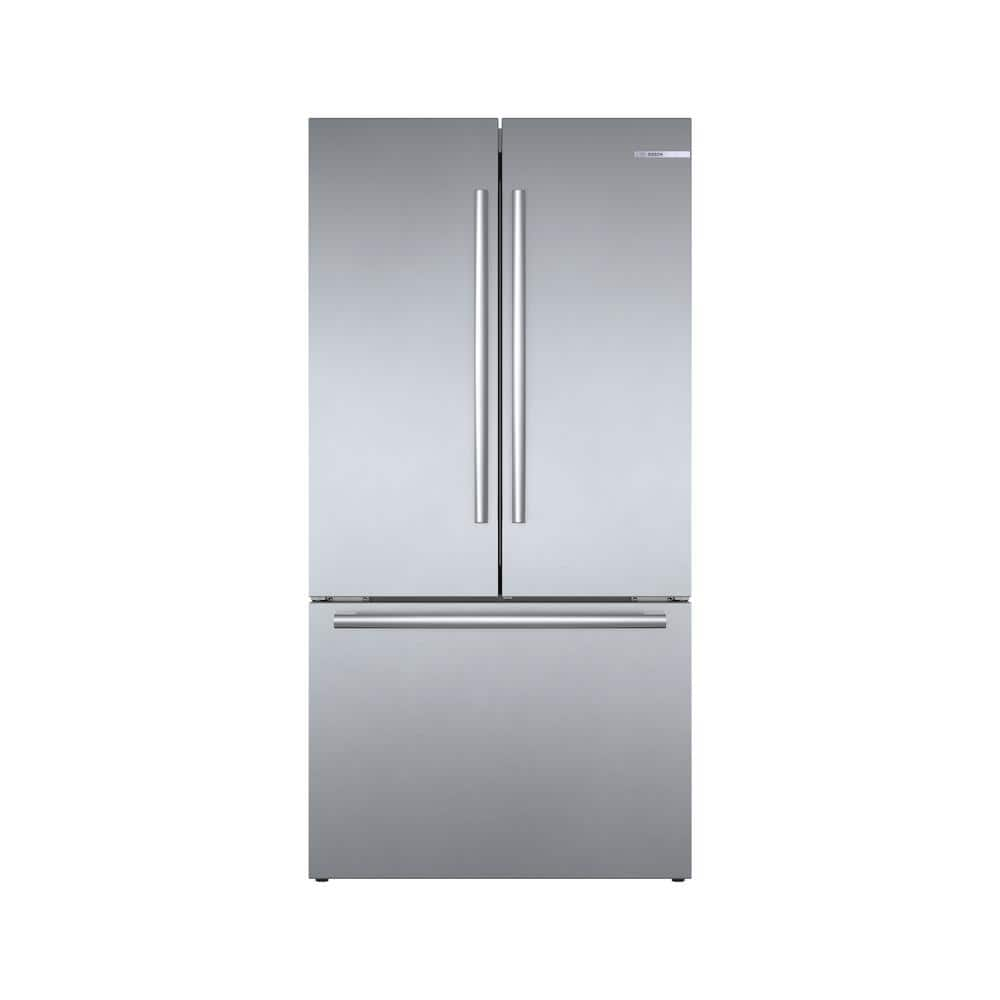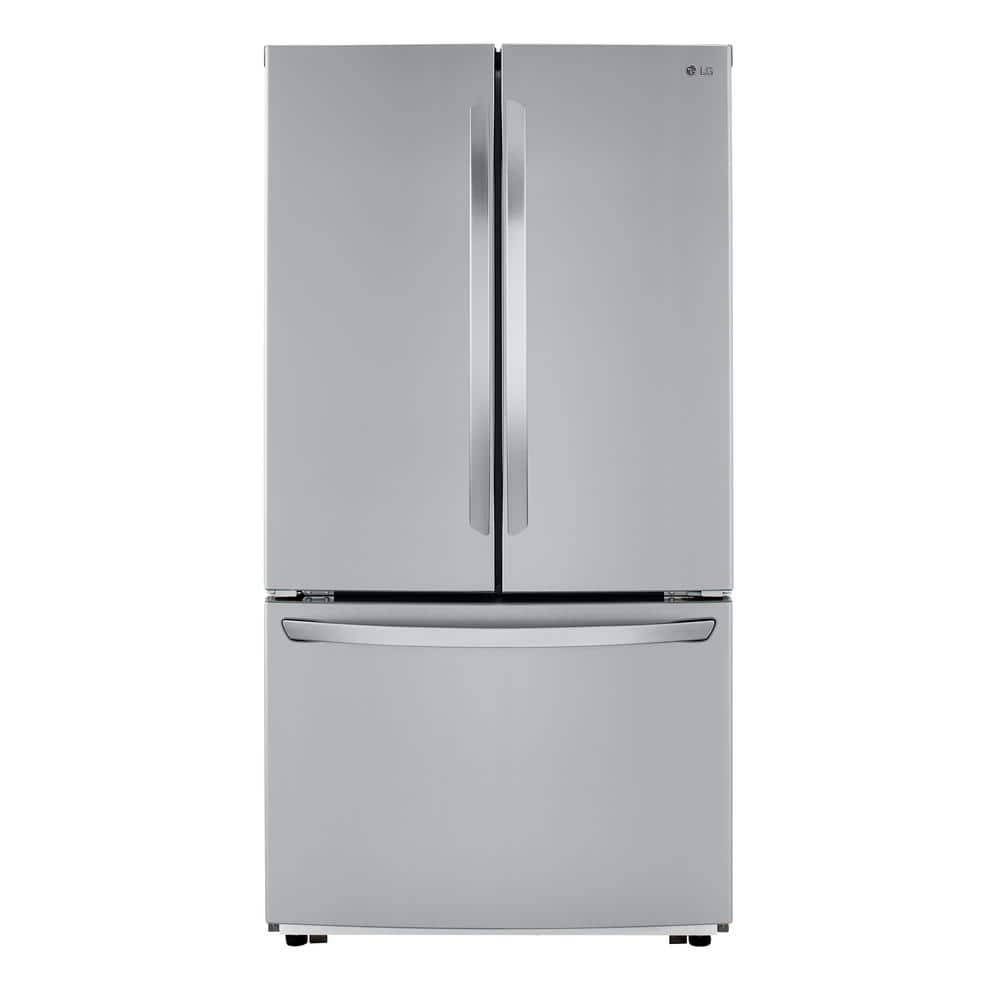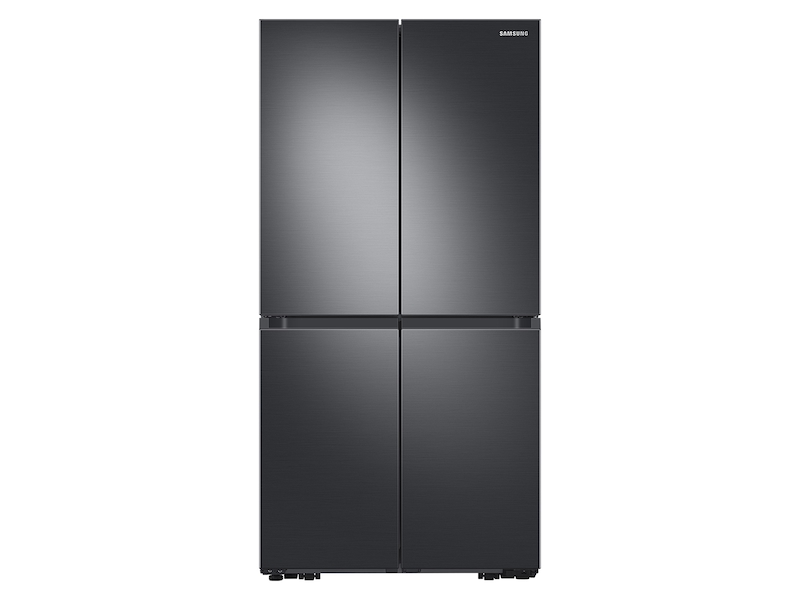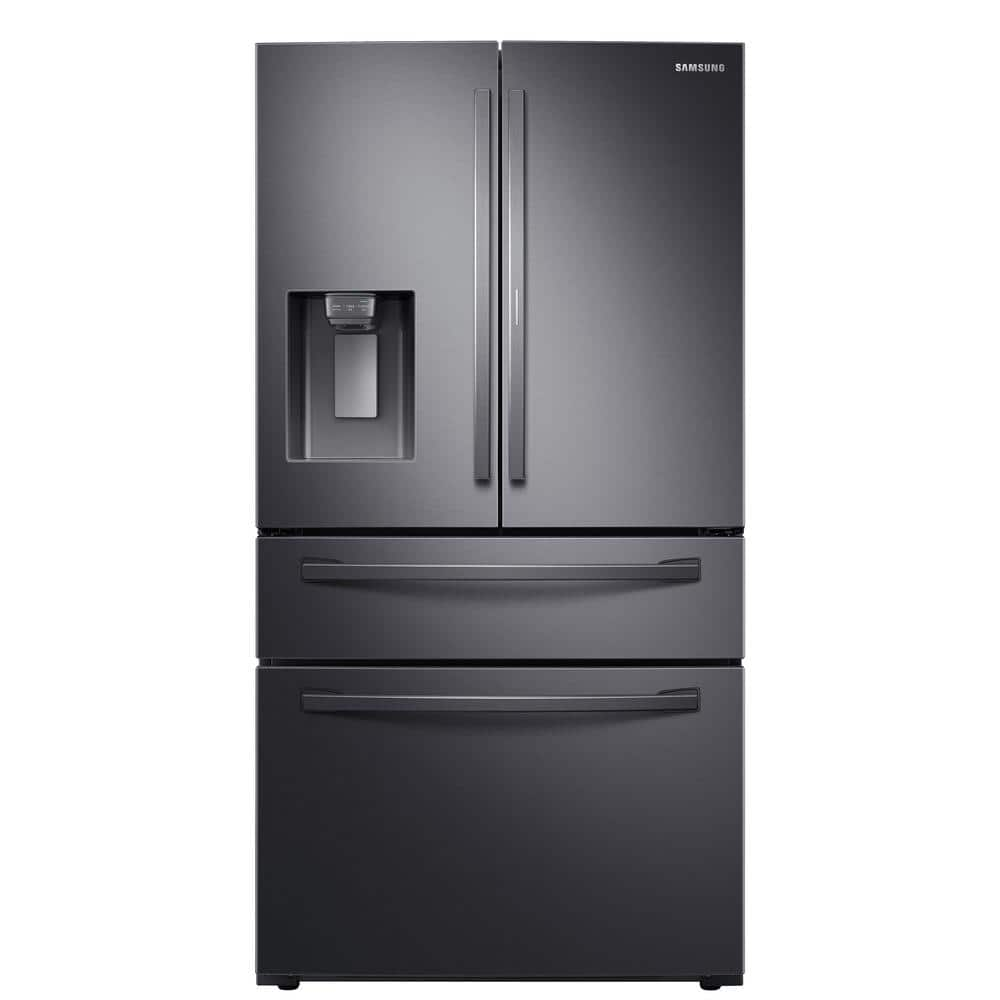GE Profile 21.9 cu. ft. Side by Side Refrigerator in Fingerprint Resistant Stainless Steel, Counter Depth
Resists fingerprints and smudges for a clean sleek appearance. LED lighting makes items easy to spot and retrieve. Quickly restore temperatures with an extra boost of cold air.
Built on the belief that modern life needs modern solutions. GE Profile Appliances are designed to make daily life simpler by incorporating Smart Home technology and cutting-edge features in every appliance. GE Profile’s sleek design and quality engineering will give your kitchen the most up-to-date look and the best innovative performance you’ve been looking for.
- Fingerprint Resistant Stainless – Easily wipe away smudges and fingerprints for a look that’s always sparkling clean
- Counter Depth Design – Enjoy a built-in look in the kitchen thanks to a counter depth refrigerator that fits nearly flush with cabinets and counters
- Showcase LED Lighting – Easily find even the smallest food items thanks to 7 flush-mounted LED lights, which shed more crisp, even light throughout the interior without wasting space
- Turbo Cool setting – Quickly bring down the interior refrigerator temperature thanks to an innovative Turbo Cool setting, which circulates an extra boost of cold air throughout the interior when selected
- Quick Ice setting – this refrigerator’s icemaker features a cutting-edge Quick Ice setting which creates ice up to 50% faster than normal settings
- QuickSpace Shelf – the perfect place for everything in your refrigerator, even tall items thanks to a space saving shelf system which easily slides back to create more room
- Interior Storage Drawers – 3-refrigerator pull out drawers with clear fronts provide the perfect, sealed environment to keep your produce organized
- Adjustable Glass Shelves – Contain spills and make cleanup quick and easy, thanks to spill proof glass shelving with raised edges
- Easy Access Icemaker – Automatically create cubed or crushed ice thanks to a factory-installed, low Profile icemaker
- External Dispenser – Get advanced filtered water and ice from a specially engineered, seamless dispenser located on the outside of the door
- Electronic Display – always get the refrigerator temperature just right with a sleek electronic display that allows for precise settings
- Advanced Water Filtration – Reduces impurities, lead and trace pharmaceuticals from water and ice (removes 98% of ibuprofen, atenolol, fluoxetine, progesterone and trimethoprim, Impurities are not necessarily in all users’ water)
- Glass Freezer Shelves – easily store even the smallest or thinnest items in the freezer section thanks for durable glass shelving
- Freezer Baskets – 2-organizational freezer baskets provide plenty of easy-access storage for frozen foods
- Adaptive Defrost – with FrostGuard technology, your freezer will only defrost when needed, as opposed to a time cycle, leading to less freezer burn and more energy savings
- Enhanced Shabbos Mode – the Shabbos Keeper connects to your refrigerator to automatically enable Shabbos compatible modes each week and before every holiday (Shabbos Keeper sold separately, visit www.zmantechnologies.com for details)
- Limited 1-year entire appliance warranty
Additional information
| Depth (Excluding Handles) | 28.5 in |
|---|---|
| Depth (Including Handles) | 30.75 in |
| Depth (Less Door) | 24.125 |
| Depth With Door Open 90 Degrees (In) | 46.25 |
| Height to Top of Door Hinge (in.) | 69.875 in |
| Height to Top of Refrigerator (in.) | 69.25 in |
| Product Depth (in.) | 30.75 |
| Product Height (in.) | 69.25 |
| Product Width (in.) | 35.75 |
| Refrigerator Width (In.) | 35.75 |
| Certifications and Listings | UL Listed |
| Manufacturer Warranty | Limited 1-year entire appliance warranty |
Twenty-one, XXI or 21 may refer to:
- 21 (number)
- One of the years 21 BC, AD 21, 1921, 2021
A fingerprint is an impression left by the friction ridges of a human finger. The recovery of partial fingerprints from a crime scene is an important method of forensic science. Moisture and grease on a finger result in fingerprints on surfaces such as glass or metal. Deliberate impressions of entire fingerprints can be obtained by ink or other substances transferred from the peaks of friction ridges on the skin to a smooth surface such as paper. Fingerprint records normally contain impressions from the pad on the last joint of fingers and thumbs, though fingerprint cards also typically record portions of lower joint areas of the fingers.
Human fingerprints are detailed, unique, difficult to alter, and durable over the life of an individual, making them suitable as long-term markers of human identity. They may be employed by police or other authorities to identify individuals who wish to conceal their identity, or to identify people who are incapacitated or dead and thus unable to identify themselves, as in the aftermath of a natural disaster.
Their use as evidence has been challenged by academics, judges and the media. There are no uniform standards for point-counting methods, and academics have argued that the error rate in matching fingerprints has not been adequately studied and that fingerprint evidence has no secure statistical foundation. Research has been conducted into whether experts can objectively focus on feature information in fingerprints without being misled by extraneous information, such as context.
A refrigerator, commonly shortened to fridge, is a commercial and home appliance consisting of a thermally insulated compartment and a heat pump (mechanical, electronic or chemical) that transfers heat from its inside to its external environment so that its inside is cooled to a temperature below the room temperature. Refrigeration is an essential food storage technique around the world. The low temperature reduces the reproduction rate of bacteria, so the refrigerator lowers the rate of spoilage. A refrigerator maintains a temperature a few degrees above the freezing point of water. The optimal temperature range for perishable food storage is 3 to 5 °C (37 to 41 °F). A freezer is a specialized refrigerator, or portion of a refrigerator, that maintains its contents’ temperature below the freezing point of water. The refrigerator replaced the icebox, which had been a common household appliance for almost a century and a half. The United States Food and Drug Administration recommends that the refrigerator be kept at or below 4 °C (40 °F) and that the freezer be regulated at −18 °C (0 °F).
The first cooling systems for food involved ice. Artificial refrigeration began in the mid-1750s, and developed in the early 1800s. In 1834, the first working vapor-compression refrigeration system, using the same technology seen in air conditioners, was built. The first commercial ice-making machine was invented in 1854. In 1913, refrigerators for home use were invented. In 1923 Frigidaire introduced the first self-contained unit. The introduction of Freon in the 1920s expanded the refrigerator market during the 1930s. Home freezers as separate compartments (larger than necessary just for ice cubes) were introduced in 1940. Frozen foods, previously a luxury item, became commonplace.
Freezer units are used in households as well as in industry and commerce. Commercial refrigerator and freezer units were in use for almost 40 years prior to the common home models. The freezer-over-refrigerator style had been the basic style since the 1940s, until modern, side-by-side refrigerators broke the trend. A vapor compression cycle is used in most household refrigerators, refrigerator–freezers and freezers. Newer refrigerators may include automatic defrosting, chilled water, and ice from a dispenser in the door.
Domestic refrigerators and freezers for food storage are made in a range of sizes. Among the smallest are Peltier-type refrigerators designed to chill beverages. A large domestic refrigerator stands as tall as a person and may be about one metre (3 ft 3 in) wide with a capacity of 0.6 m3 (21 cu ft). Refrigerators and freezers may be free standing, or built into a kitchen. The refrigerator allows the modern household to keep food fresh for longer than before. Freezers allow people to buy perishable food in bulk and eat it at leisure, and make bulk purchases.
Stainless may refer to:
- Cleanliness, or the quality of being clean
- Stainless steel, a corrosion-resistant metal alloy
- Stainless Games, a British video game developer
- Stainless Broadcasting Company, a TV broadcaster based in Michigan, US
- Stainless Banner, the second national flag of the Confederate States of America
Steel is an alloy of iron and carbon that demonstrates improved mechanical properties compared to the pure form of iron. Due to steel's high elastic modulus, yield strength, fracture strength and low raw material cost, steel is one of the most commonly manufactured materials in the world. Steel is used in structures (as concrete reinforcing rods), in bridges, infrastructure, tools, ships, trains, cars, bicycles, machines, electrical appliances, furniture, and weapons.
Iron is always the main element in steel, but other elements are used to produce various grades of steel demonstrating altered material, mechanical, and microstructural properties. Stainless steels, for example, typically contain 18% chromium and exhibit improved corrosion and oxidation resistance versus its carbon steel counterpart. Under atmospheric pressures, steels generally take on two crystalline forms: body-centered cubic and face-centered cubic, however depending on the thermal history and alloying, the microstructure may contain the distorted martensite phase or the carbon-rich cementite phase, which are tetragonal and orthorhombic, respectively. In the case of alloyed iron, the strengthening is primarily due to the introduction of carbon in the primarily-iron lattice inhibiting deformation under mechanical stress. Alloying may also induce additional phases that affect the mechanical properties. In most cases, the engineered mechanical properties are at the expense of the ductility and elongation of the pure iron state, which decrease upon the addition of carbon.
Steel was produced in bloomery furnaces for thousands of years, but its large-scale, industrial use began only after more efficient production methods were devised in the 17th century, with the introduction of the blast furnace and production of crucible steel. This was followed by the Bessemer process in England in the mid-19th century, and then by the open-hearth furnace. With the invention of the Bessemer process, a new era of mass-produced steel began. Mild steel replaced wrought iron. The German states were the major steel producers in Europe in the 19th century. American steel production was centred in Pittsburgh; Bethlehem, Pennsylvania; and Cleveland until the late 20th century. Currently, world steel production is centered in China, which produced 54% of the world's steel in 2023.
Further refinements in the process, such as basic oxygen steelmaking (BOS), largely replaced earlier methods by further lowering the cost of production and increasing the quality of the final product. Today more than 1.6 billion tons of steel is produced annually. Modern steel is generally identified by various grades defined by assorted standards organizations. The modern steel industry is one of the largest manufacturing industries in the world, but also one of the most energy and greenhouse gas emission intense industries, contributing 8% of global emissions. However, steel is also very reusable: it is one of the world's most-recycled materials, with a recycling rate of over 60% globally.







by Dan
Great refrigerator, but could use more room inside.
by Madhu
Have been using GE products for 25+ years – would like more freezer space but i have those options in other models – this is perfect size for 2 people.
by Madge
I love this counter depth refrigerator. I prefer this side by side over my previous freezer on the bottom. I like the pull open wire like shelves in freezer door. Ample room in this product for two person household. This fingerprint resistant stainless steel product cleans easily using soft cloth, water and mild soap. Runs quietly. Drawers in fridge and freezer are good sizes.
by Diedra
Perfect fit in my kitchen.. last fridge was a bit bigger.. will force me to buy less food!!
by Sean
We are moving from a failed Samsung so what a welcome change. Quiet, great ice maker, keep food ice cold!!
by Silva
Looks very nice, quite, and makes ice fast. And is well lit on the inside.
by Suebe
Love the counter depth and finish. Customer service is excellent. All my appliances are GE. Replaced Samsung for better quality and Service.
by James
Love the finish of this refrigerator. Very quiet!